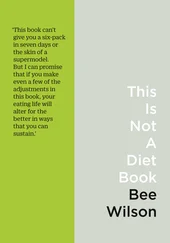On the history of the development of derivative markets and the role of the CBOT in the process, see Y. Millo, ‘Safety in numbers: how exchanges and regulators shaped index-based derivatives’, a paper presented at the Conference on the Social Studies of Finance, Center on Organizational Innovation (COI), Columbia University, 3–4 May 2002; downloadable at: http://www.coi.columbia.edu/ssf/papers/millo.rtf, and ‘A Brief History of Options’, downloadable at: http://www.optionsplaybook.com/options-introduction/stock-option-history/.
See Millo, ‘Safety in numbers’, and C. Lapavitsas, Profiting without Producing: How Finance Exploits All (London: Verso, 2013), p. 6.
H. Blommestein et al., ‘Outlook for the securitisation market’, OECD Journal: Market Trends , vol. 2011, issue 1 (2011), p. 6,figure 6, downloaded from: http://www.oecd.org/finance/financial-markets/48620405.pdf. According to the Eurostat, the EU ’s statistical agency, in 2010, GDP was € 12.3 trillion in the European Union and € 10.9 trillion in the US.
L. Lin and J. Sutri, ‘Capital requirements for over-the-counter derivatives central counterparties’, IMF Working Paper, WP / 13 / 3, 2013, p. 7,figure 1, downloadable from: http://www.imf.org/external/pubs/ft/wp/2013/wp1303.pdf.
G. Palma, ‘The revenge of the market on the rentiers: why neo-liberal reports of the end of history turned out to be premature’, Cambridge Journal of Economics , vol. 33, no. 4 (2009).
France, which often styles itself as a counterpoint to Anglo-American finance capitalism, has not lagged far behind the UK in this respect – the ratio of its financial assets to GDP is only marginally lower than that of the UK.
Lapavitsas, Profiting without Producing , p. 206,figure 2.
J. Crotty, ‘If financial market competition is so intense, why are financial firm profits so high?: Reflections on the current “golden age” of finance’, Working Paper no. 134 (Amherst, MA: PERI (Political Economy Research Institute), University of Massachusetts, April 2007).
Summers, a professor of economics on leave from Harvard and a former chief economist of the World Bank (1991–3), subsequently became the Treasury secretary (July 1999 –January 2001) during Bill Clinton’s second presidency and then was the director of the National Economic Council (January 2009 –December 2010) during Barack Obama’s first term.
A. Haldane, ‘Rethinking the financial network’, Speech delivered at the Financial Student Association, Amsterdam, April 2009, pp. 16 –1 7. The speech can be downloaded from: http://www.bankofengland.co.uk/publications/Documents/speeches/2009/speech386.pdf.
M. Blyth, Austerity: The History of a Dangerous Idea (Oxford: Oxford University Press, 2013), pp. 26–7.
The average shareholding periods for banks fell from about three years in 1998 to about three months in 2008. P. Sikka, ‘Nick Clegg’s plan for shareholders to tackle fat-cat pay won’t work’, Guardian , 6 December 2011, downloadable from: http://www.guardian.co.uk/commentisfree/2011/dec/06/nick-clegg-shareholders-fat-cat-pay?.
The financial sector has not always been more profitable than the non-financial sector. According to a study published in 2005, in the US, between the mid- 1960s and the late 1970s, the rate of profit for financial firms was lower than that of the non-financial firms. But, following financial deregulation in the early 1980s, the profit rate of financial firms (on a rising trend, ranging between 4 per cent and 12 per cent) was significantly higher than that of non-financial firms (2–5 per cent) until the early 2000s (the data in the study ended there). In France, the profit rate of financial corporations was negative between the early 1970s and the mid- 1980s (no data are available for the 1960s). With the financial deregulation of the late 1980s, it started rising and overtook that of non-financial firms in the early 1990s, when both were about 5 per cent, and rose to over 10 per cent by 2001. In contrast, the profit rate of French non-financial firms declined from the early 1990s, to reach around 3 per cent in 2001. See G. Duménil and D. Lévy, ‘Costs and benefits of neoliberalism: a class analysis’, in G. Epstein (ed.), Financialisation and the World Economy (Cheltenham: Edward Elgar, 2005).
A few years ago, Professor David King, the eminent Cambridge chemist and the chief scientific advisor to the British government between 2000 and 2007, told me that probably 60 per cent of his former PhD students are working in the financial industry.
Reinhart and Rogoff, This Time Is Different , p. 252,figure 16. 1.
Palma, ‘The revenge of the market on the rentiers’, p. 851,figure 12.
W. Lazonick, ‘Big payouts to shareholders are holding back prosperity’, Guardian , 27 August 2012; downloadable from: http://www.theguardian.com/commentisfree/2012/aug/27/shareholder-payouts-holding-back-prosperity.
It remained at 99 per cent in 2011 and 2012. The data in this paragraph are from the Federal Reserve Board flow of funds data; downloadable from: http://www.federalreserve.gov/apps/fof/. Similar estimates up to the early 2000s can be found in Crotty, ‘If financial market competition is so intense’. Another estimate comes up with lower numbers, but the trend is the same: just over 20 per cent in 1955, rising to around 30 per cent by the mid- 1980s, rising to 50 per cent in the early 2000s, falling to around 45 per cent in the run-up to the 2008 crisis and rising back over 50 per cent by 2010. See W. Milberg and N. Shapiro, ‘Implications of the recent financial crisis for innovation’, New School for Social Research, mimeo, February 2013.
The information for GE is from R. Blackburn, ‘Finance and the fourth dimension’, New Left Review , May/June 2006, p. 44. J. Froud et al., Financialisation and Strategy: Narrative and Numbers (London: Routledge, 2006) estimates that the ratio could be as high as 50 per cent. The Ford number comes from the Froud et al. study and the GM number from the Blackburn study.
This point is very clearly and insightfully made by Andy Haldane of the Bank of England (see above) in ‘The dog and the frisbee’, speech delivered at the Federal Reserve Bank of Kansas City’s 36th Economic Policy Symposium on ‘The Changing Policy Landscape’, Jackson Hole, Wyoming, 31 August 2012; downloadable from:
http://www.bankofengland.co.uk/publications/Documents/speeches/2012/speech596.pdf.
M. Friedman and R. Friedman, Free to Choose (Harmondsworth: Penguin Books, 1980), pp. 31–2.
Ethical arguments against inequality include the following: a high degree of inequality is morally unacceptable because a large part of what you earn is down to luck (e.g., to which parents you were born) rather than a ‘just desert’ (e.g., eff orts you have made); a group with too many discrepancies between its members cannot function as a true community; too much inequality undermines democracy by allowing the rich to exercise disproportionate political influence.
Читать дальше












